Filter by

The Psychophysical Ear: Musical Experiments, Experimental Sounds, 1840-1910
An examination of how the scientific study of sound sensation became increasingly intertwined with musical aesthetics in nineteenth-century Germany and Austria. In the middle of the nineteenth century, German and Austrian concertgoers began to hear new rhythms and harmonies as non-Western musical ensembles began to make their way to European cities and classical music introduced new composit…
- Edition
- -
- ISBN/ISSN
- 9780262305952
- Collation
- -
- Series Title
- -
- Call Number
- -

Computing In Musicology: The Virtual Score, Volume 12: Representation, Retrie…
An overview of approaches to working with musical scores in the age of computer—and especially Internet—applications. The Virtual Score examines a broad range of approaches to working with musical scores in ways suited to electronic distribution. The first section, on musical representation and interchange, discusses early music and its multiple editorial stances, scores in Braille music…
- Edition
- -
- ISBN/ISSN
- 9780262316187
- Collation
- -
- Series Title
- -
- Call Number
- -
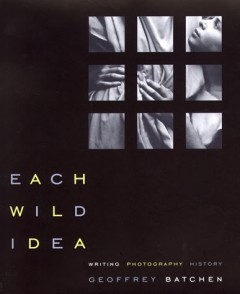
Each Wild Idea: Writing, Photography, History
Essays on photography and the medium's history and evolving identity. In Each Wild Idea, Geoffrey Batchen explores a wide range of photographic subjects, from the timing of the medium's invention to the various implications of cyberculture. Along the way, he reflects on contemporary art photography, the role of the vernacular in photography's history, and the Australianness of Australian pho…
- Edition
- -
- ISBN/ISSN
- 9780262267892
- Collation
- -
- Series Title
- -
- Call Number
- -
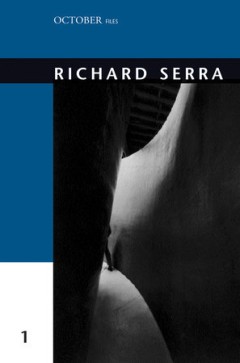
Richard Serra
A critical primer on artist Richard Serra's work. Richard Serra is considered by many to be the most important sculptor of the postwar period. The essays in this volume cover the complete span of Serra's work to date—from his first experiments with materials and processes through his early films and site works to his current series of "torqued ellipses." There is a special emphasis on thos…
- Edition
- -
- ISBN/ISSN
- 9780262273022
- Collation
- -
- Series Title
- -
- Call Number
- -

The Robot in the Garden: Telerobotics and Telepistemology in the Age of the I…
An interdisciplinary collection of essays on telepistemology—the study of knowledge acquired at a distance. The Robot in the Garden initiates a critical theory of telerobotics and introduces telepistemology, the study of knowledge acquired at a distance. Many of our most influential technologies, the telescope, telephone, and television, were developed to provide knowledge at a distance. Tel…
- Edition
- -
- ISBN/ISSN
- 9780262274029
- Collation
- -
- Series Title
- -
- Call Number
- -

Art and Innovation: The Xerox PARC Artist-in-Residence Program
Exploring a radical combination of research, art and new media. The idea behind Xerox's interdisciplinary Palo Alto Research Center (PARC) is simple: if you put creative people in a hothouse setting, innovation will naturally emerge. PARC's Artist-in-Residence Program (PAIR) brings artists who use new media to PARC and pairs them with researchers who often use the same media, though in differe…
- Edition
- -
- ISBN/ISSN
- 9780262275002
- Collation
- -
- Series Title
- -
- Call Number
- -
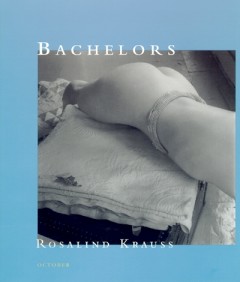
Bachelors
These essays on nine women artists are framed by the question, born of feminism, "What evaluative criteria can be applied to women's art?" Since the 1970s Rosalind Krauss has been exploring the art of painters, sculptors, and photographers, examining the intersection of these artists concerns with the major currents of postwar visual culture: the question of the commodity, the status of the …
- Edition
- -
- ISBN/ISSN
- 9780262277600
- Collation
- -
- Series Title
- -
- Call Number
- -
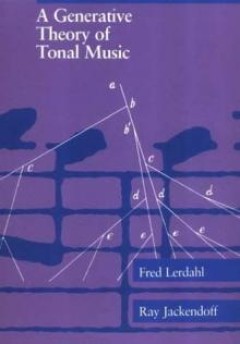
A Generative Theory of Tonal Music
A search for a grammar of music with the aid of generative linguistics. This work, which has become a classic in music theory since its original publication in 1983, models music understanding from the perspective of cognitive science.The point of departure is a search for the grammar of music with the aid of generative linguistics.The theory, which is illustrated with numerous examples from W…
- Edition
- -
- ISBN/ISSN
- 780262278164
- Collation
- -
- Series Title
- -
- Call Number
- -
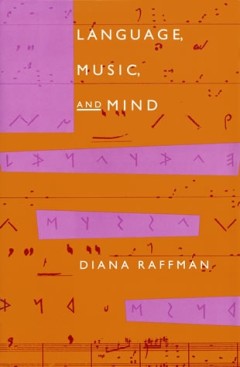
Language, Music, and Mind
The first cognitivist theory of the nature of ineffable, or verbally inexpressible, musical knowledge. Taking a novel approach to a longstanding problem in the philosophy of art, Diana Raffman provides the first cognitivist theory of the nature of ineffable, or verbally inexpressible, musical knowledge. In the process she also sheds light on central issues in the theory of mind. Raffman invok…
- Edition
- -
- ISBN/ISSN
- 9780262282024
- Collation
- -
- Series Title
- -
- Call Number
- -
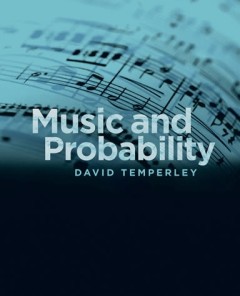
Music and Probability
Exploring the application of Bayesian probabilistic modeling techniques to musical issues, including the perception of key and meter. In Music and Probability, David Temperley explores issues in music perception and cognition from a probabilistic perspective. The application of probabilistic ideas to music has been pursued only sporadically over the past four decades, but the time is ripe, T…
- Edition
- -
- ISBN/ISSN
- 9780262257077
- Collation
- -
- Series Title
- -
- Call Number
- -
 Computer Science, Information & General Works
Computer Science, Information & General Works  Philosophy & Psychology
Philosophy & Psychology  Religion
Religion  Social Sciences
Social Sciences  Language
Language  Pure Science
Pure Science  Applied Sciences
Applied Sciences  Art & Recreation
Art & Recreation  Literature
Literature  History & Geography
History & Geography